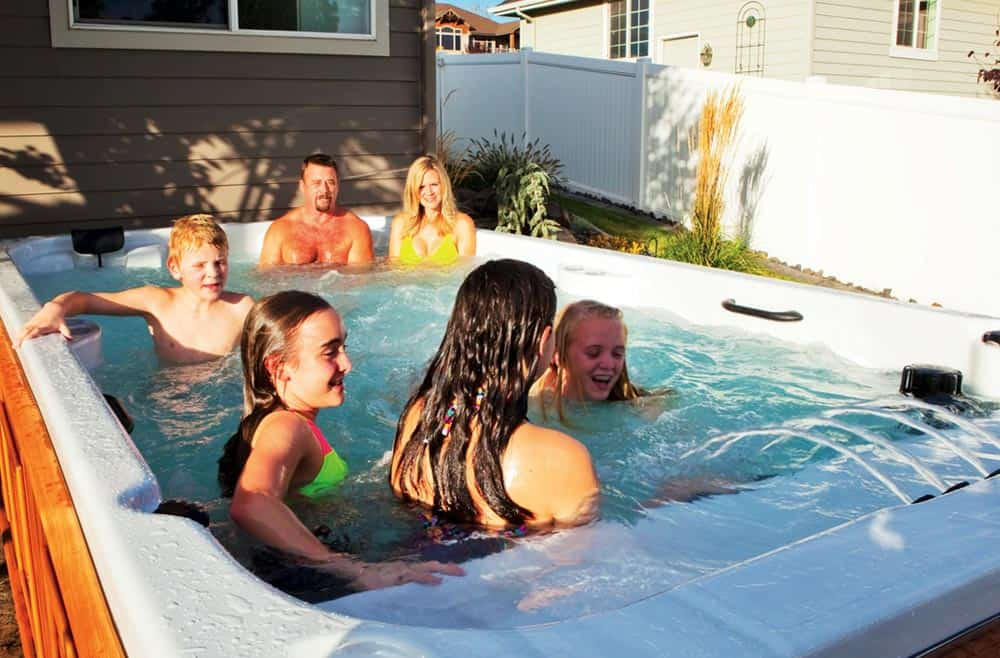You could say that nothing in your hot tub maintenance routine is more important than sanitizing. High temperatures and smaller water volume make spas and hot tubs the ideal breeding ground for dangerous germs if the water is not properly sanitized. The two most popular sanitizer options for hot tubs are chlorine and bromine. Other methods of sanitizing hot tubs include mineral and biguanide systems.
Chlorine - Chlorine is the most popular sanitizer choice in hot tubs and swimming pools because it works quickly to kill bacteria and algae and it is relatively inexpensive. The downside of chlorine is that it can be harsh on skin and does not last as long in hot tubs as bromine.
Free chlorine levels should be kept between 1 - 3 ppm. When levels drop too low, a shock treatment will quickly bring them up and remove contaminants. We recommend using chlorine granules.
Bromine - Bromine is another great option for sanitizing hot tubs, as it is less harsh on skin and lasts longer than chlorine. However, it does burn off quickly in the sun and is slightly more expensive than chlorine.
Ideal bromine sanitizer levels are between 3 - 5 ppm. Use bromine tablets in a dispenser to maintain proper bromine levels in your spa.
Shock
Whether you use chlorine or bromine as a sanitizer in your hot tub, you still need to use a granular shock in order to get rid of the waste products created by your sanitizer. Chlorine is an oxidizer, and the byproducts given off during the oxidizing process are called chloramines. Chloramines are what cause red, itchy eyes and the unpleasant chlorine smell — you don’t want them in your water. Similarly, bromine gives off a byproduct called bromamines. They don’t cause a nasty smell, but they do decrease the effectiveness of your sanitizers. Shocking regularly will not only get rid of these byproducts, it will also help to keep your water free of algae and bacteria.
Shock your hot tub weekly, or after heavy use to bring the water up to 10 ppm. After shocking, allow the chlorine levels to return to normal. If you prefer, non-chlorine shock is also available.
Total Alkalinity
Alkalinity acts as a pH buffer in your spa, preventing it from changing too drastically. Adjust your alkalinity before adjusting the pH. Proper alkalinity levels are between 100 - 150 ppm. Use an alkalinity increaser such as Alkalinity UP to increase total alkalinity when levels drop below 100 ppm. If alkalinity levels are too high, a pH decreaser like pH minus will work to decrease both the alkalinity and the pH.
pH
Now that alkalinity levels are in the proper range, it is time to adjust the pH. The ideal pH level in a spa is between 7.4 - 7.6. When the pH is too low, the water becomes very acidic, potentially damaging your equipment. High pH levels can result in scaling which can also damage equipment.
To bring pH levels down, use a pH decreaser. If pH levels are too low, use a pH increaser to bring levels to the proper range.
Calcium Hardness
Calcium hardness is the amount of calcium and magnesium that is dissolved in your water. If you have hard water, calcium hardness levels are higher. While hard water causes problems in your house, such as calcium buildup in pipes and faucets, calcium hardness levels in a spa should be on the high side, with 175 - 250 ppm being the optimal range.
Use Calcium Hardness increaser to bring calcium levels up to the proper range. When calcium levels get too high, the best course of action is to drain and clean the spa and start over with fresh water.
